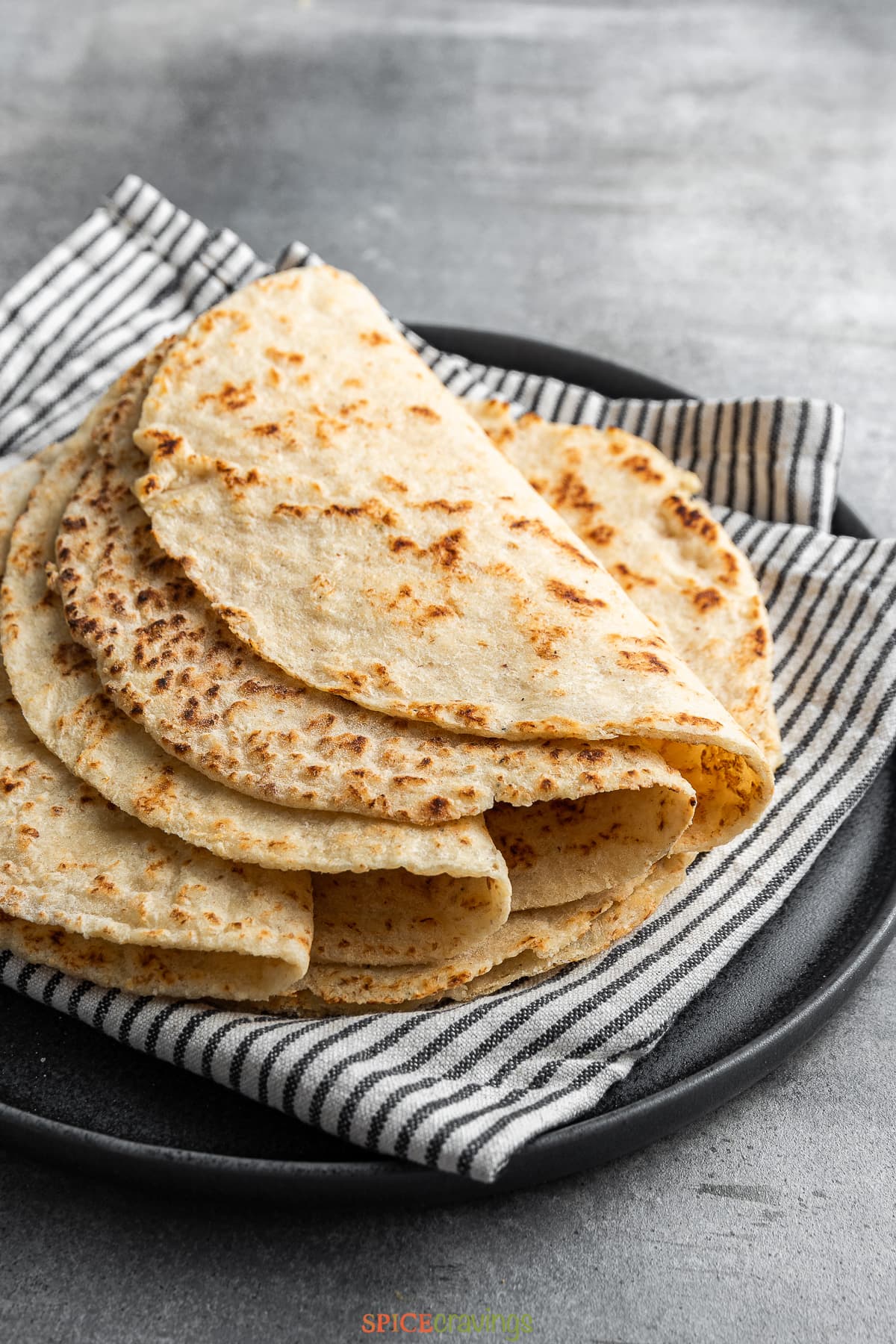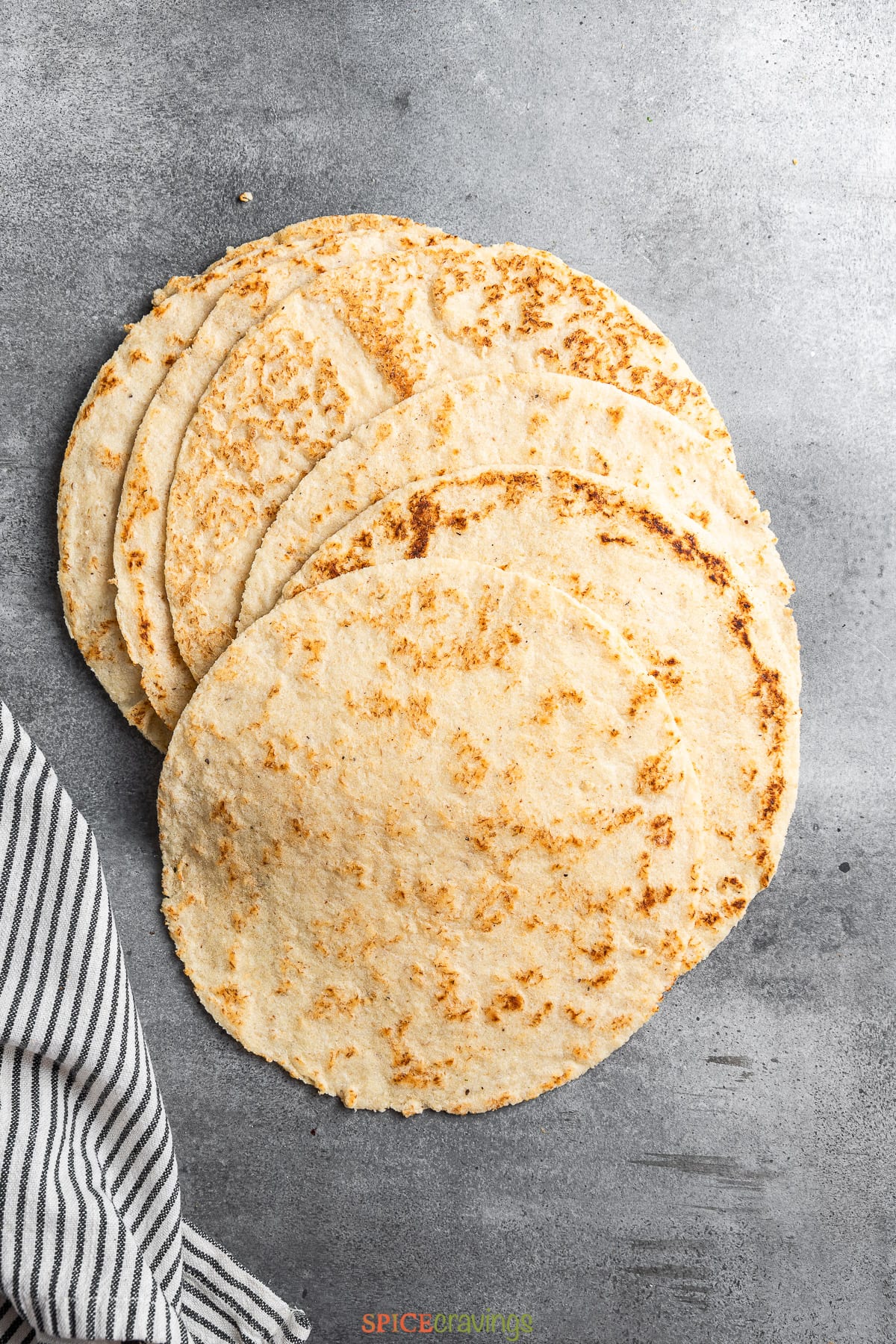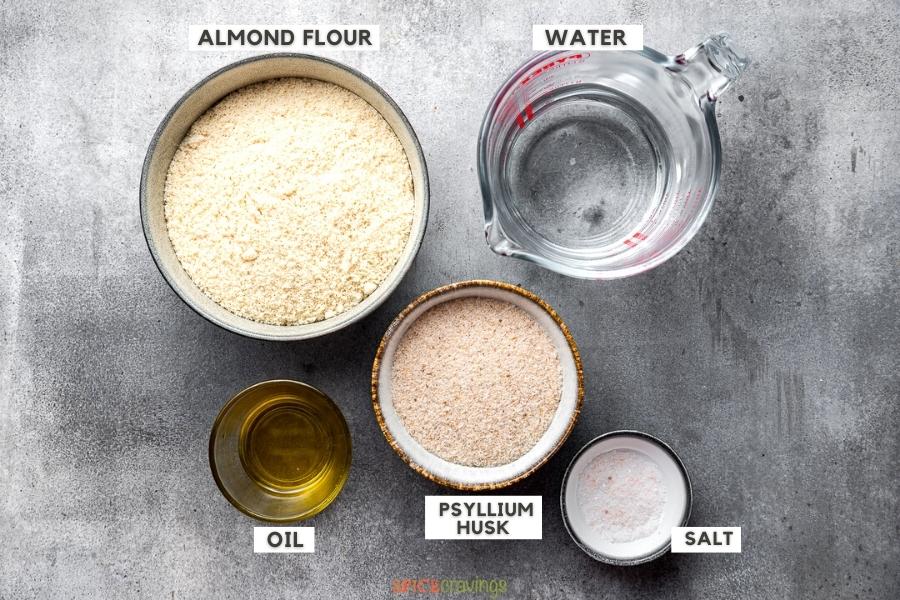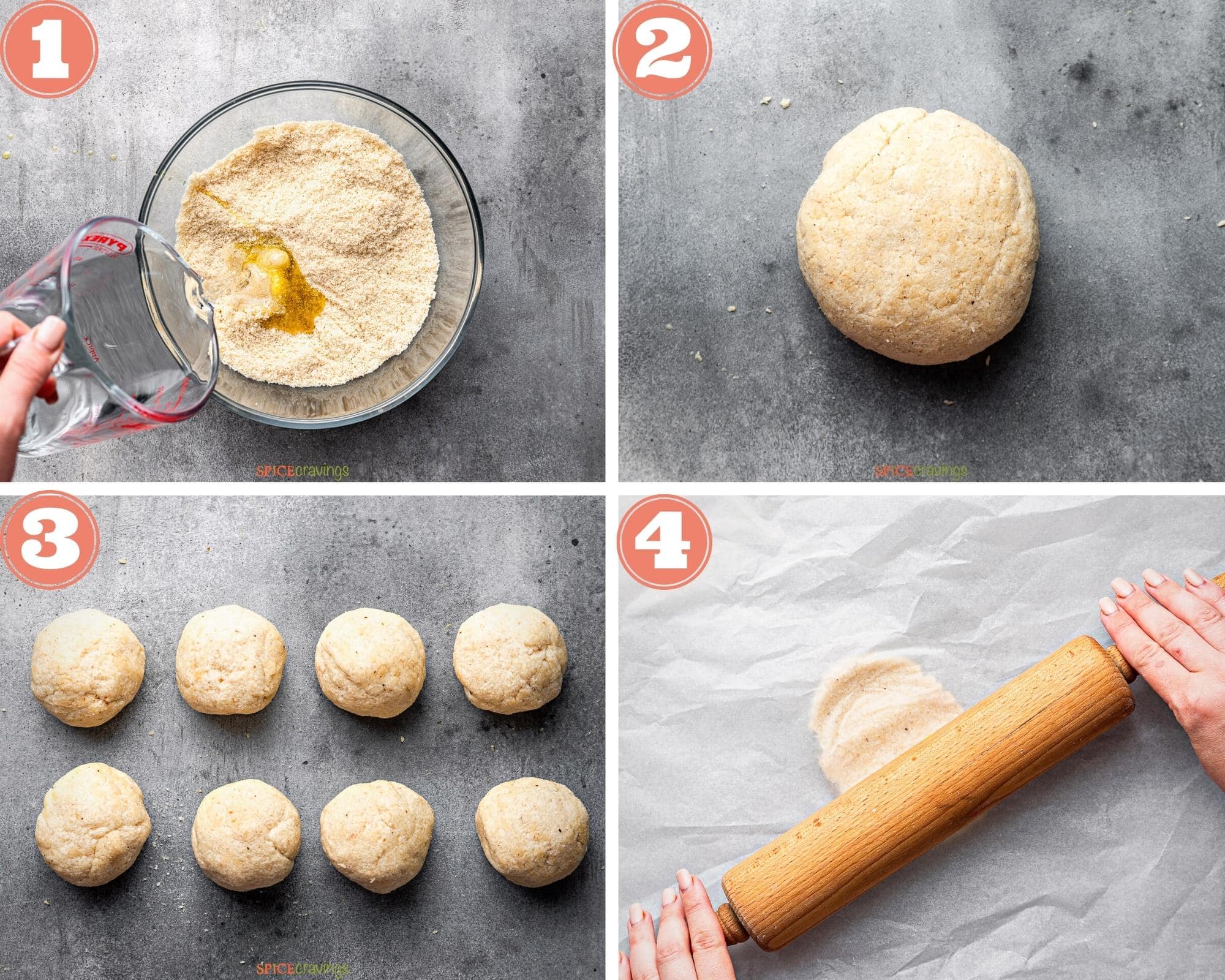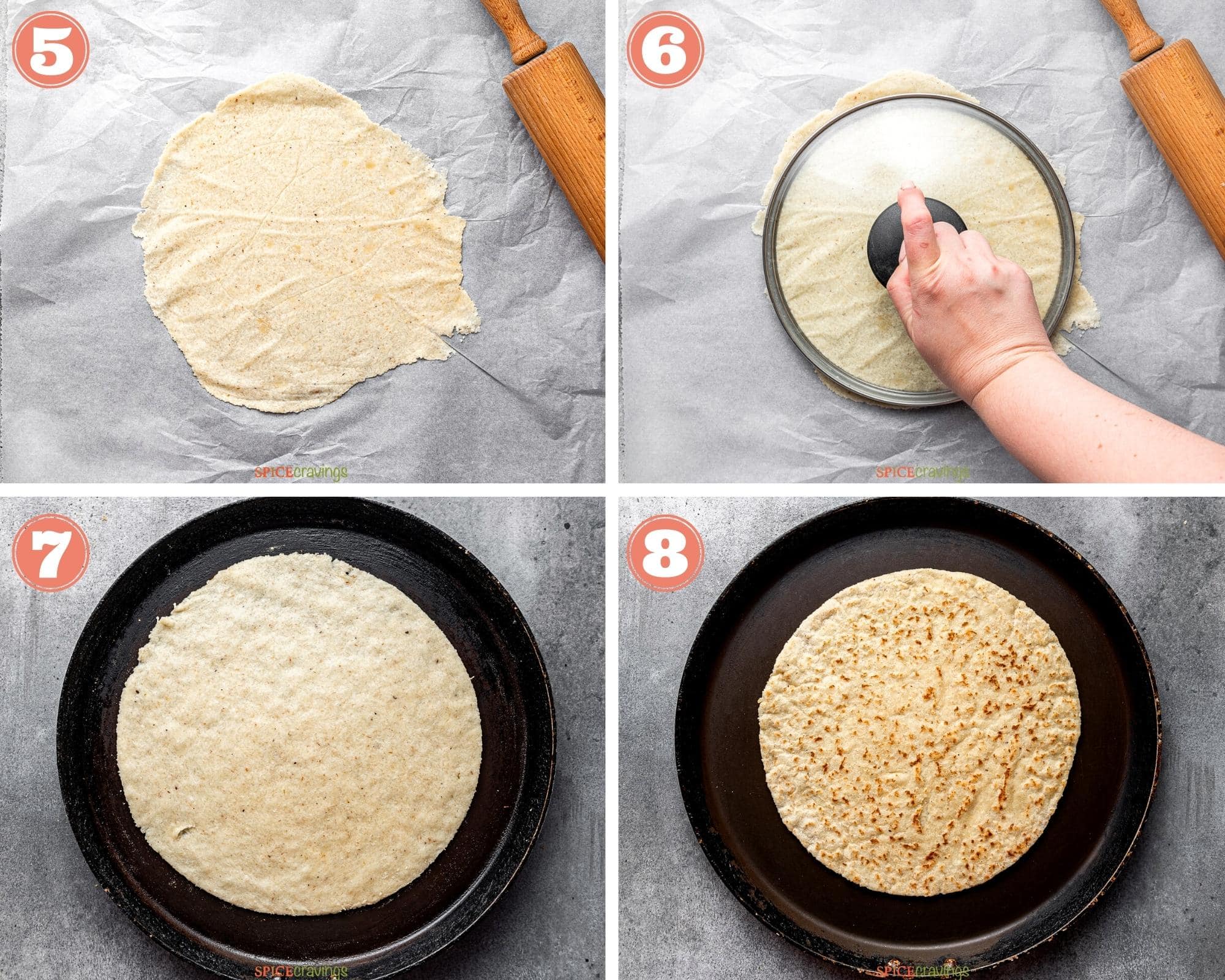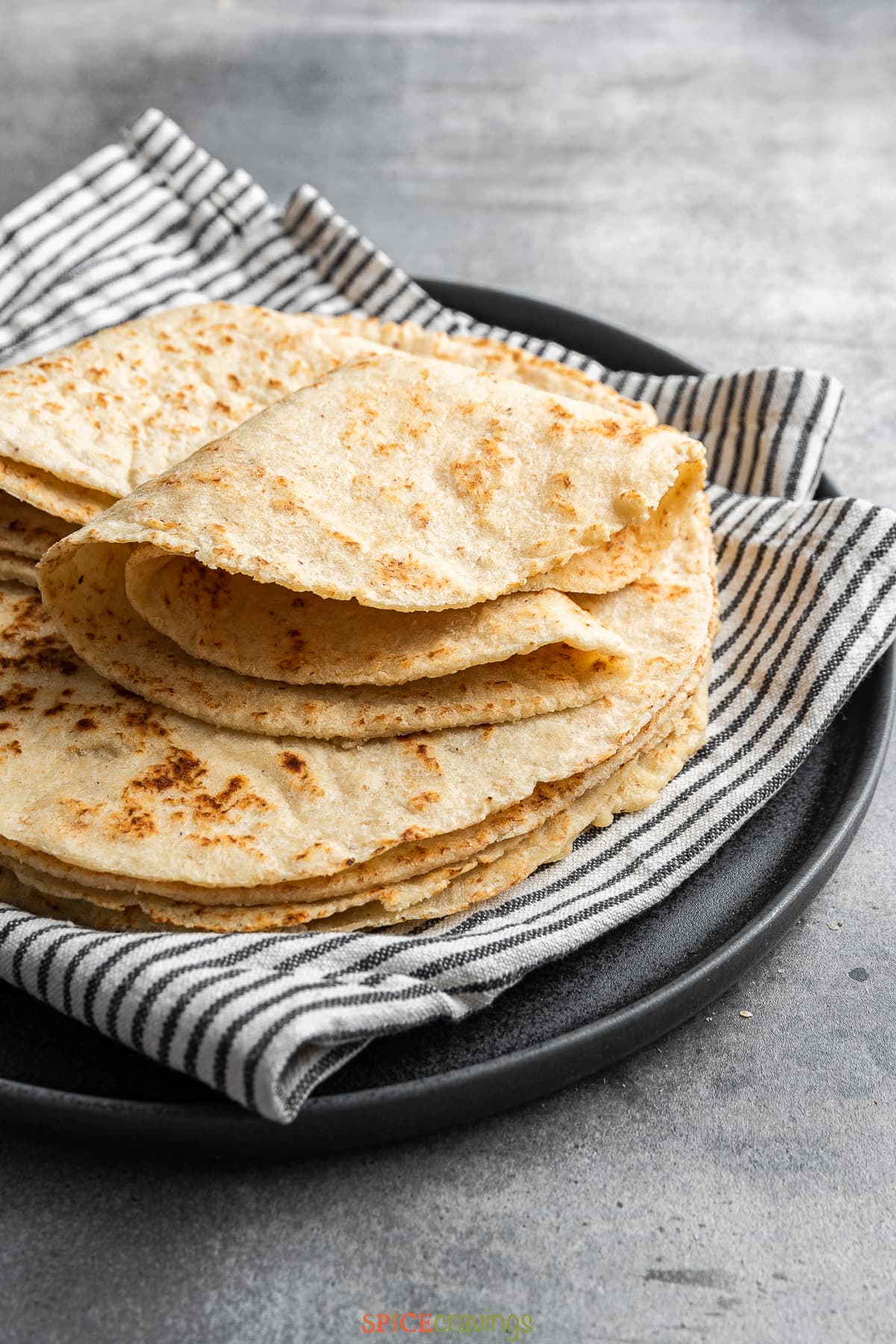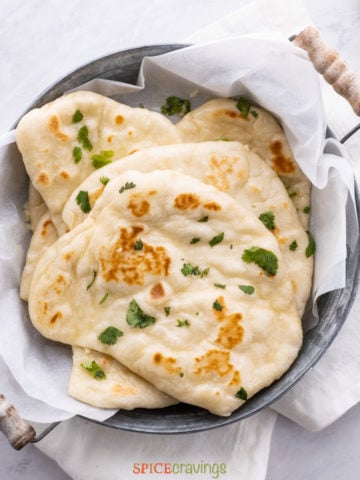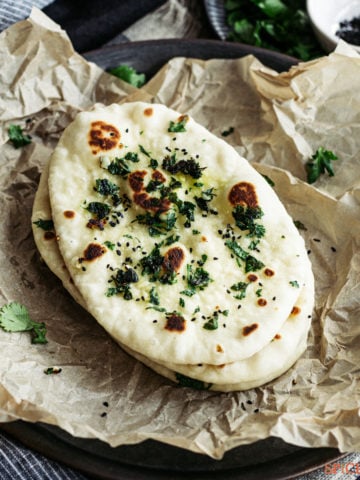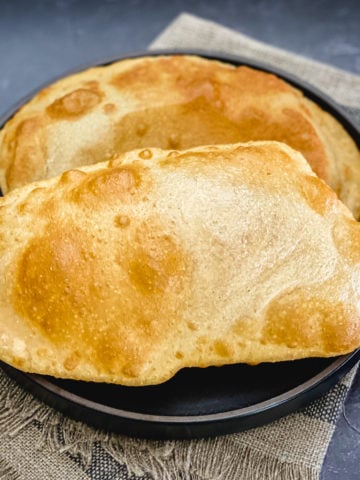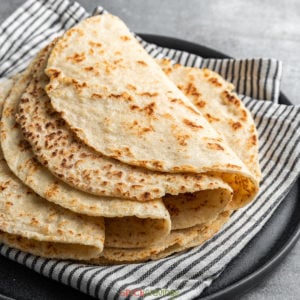Serve this gluten-free almond flour roti alongside curries and dal, or use it as a base for wraps and rolls. I love to make different versions of Indian flatbread at home, such as garlic naan, butter naan, paratha, and roti. They’re a perfect vessel to scoop up a variety of delicious Indian food.
While I make those regularly for my kids, I like to swap out mine with these gluten-free, low-carb roti to keep the carb content of my meal low. They’re easy to make and come together with only 5 ingredients. The initial few might take a little bit of practice, but the results are stunning irrespective of the shape. This keto chapati turns out just as soft, fluffy, and foldable as regular roti and contains only 4g net carbs per serving as compared to 12g in this whole-wheat roti. And you don’t need to be following a keto diet to make these. These high-protein rotis are great for many diets, including low-carb, gluten-free, vegan and vegetarian.
What is Roti?
Roti, also known as chapati or phulka, is a circular flatbread traditionally made with whole wheat flour (gehu). It is typically served with saucy curries and used as a utensil of sorts to scoop up all those flavor-packed sauces. This low-carb roti is a riff on tradition, offering an alternative for those who are mindful of carbs. You Might Also Like: Fail-proof recipe for Whole-wheat Roti
Ingredients - Notes & Substitutions
This Keto Indian flatbread requires just a handful of simple ingredients, most of which are probably already in your pantry. We will need: Almond Flour: Look for super-fine, blanched almond flour, found in the baking aisle of most grocery stores. This will produce softer rotis. My preferred brand is Bob’s Red Mill. Whole Psyllium Husk: Make sure to buy whole psyllium husk seeds, not psyllium husk powder. The powder will soak up too much moisture and produce hard rotis. The whole husks are easy to find at Whole Foods or online. Salt: To enhance those nutty flavors. Feel free to skip it if you like. Olive Oil: For richness and moisture. Olive oil, avocado oil, or ghee can all be used. Warm Water: Luke warm water will absorb much more efficiently into the flour. Cold water would require a longer resting time. I take regular water and pop it in the microwave for 15-20 seconds for the right temperature. Scroll to the recipe card for a detailed list of ingredients and quantities.
How to Make
Keto chapati follows a few simple basic principles and is ready for the table in only 15 minutes! I offer tips on how to roll and shape the dough to achieve those sought-after perfect circles.
Make Dough, Rest, and Roll
Add almond flour, psyllium husks, and salt to a mixing bowl. Mix to combine all ingredients. Add olive oil and warm water and mix until all the liquid is absorbed and a soft dough forms. Knead the dough for 1-2 minutes, and rest it for 5 minutes (Pics 1-2). Divide the dough into 8 equal pieces and gently roll each one into a round ball. Grab one dough ball and place it in the center of a parchment sheet or silicone mat. Cover the dough ball with another parchment sheet. Start rolling it outwards in a back and forth motion. Rotate the parchment slightly and roll again. Repeat this process until you flatten it to an even thickness, about 6-inches in diameter. (Note: Don’t worry if they’re not perfectly round).
Shape and Cook
If you want to fix the shape (totally optional!), grab any 6-inch lid and place it on the rolled-out dough. Press to cut the dough in a circular shape. Scrape away any excess and add to the next dough ball (Pics 5-6). Heat a non-stick pan on medium-high heat. Brush it lightly with oil. Invert the parchment paper and place the roti into the pan. Cook for 2-3 minutes on each side, until light brown spots form (Pics 7-8). Repeat to make the remaining rotis.
Serving Suggestions
Almond flour chapati is best served with Indian curries and dals, but can also be used for burritos, wraps, tacos, and more. A few of my favorite pairings include: Indian: Pair it with dal tadka, coconut fish curry, butter chicken, chicken korma, lamb korma, or dal makhani. Mediterranean: Use these as a base in Chicken Shawarma wraps. Mexican-Inspired: Use it as a wrap for cauliflower tacos, chana masala tacos, chicken tinga, or bean burritos.
How to Store & Reheat
Leftover keto roti will keep in an airtight container or plastic storage bag for 2-3 days at room temperature or up to 5 days in the fridge. Make Ahead: The uncooked roti dough can be made up to 3 days in advance. Wrap the dough ball first in parchment paper, then place it in a plastic storage bag and store it in the fridge. Freezing Instructions: Cool completely, then place the keto flatbreads in a freezer-safe plastic storage bag, with squares of parchment between each one to prevent sticking. Freeze for up to 6 months. Thaw right on the kitchen counter. Reheating Instructions: Reheat in a preheated skillet for 10-15 seconds on each side. Or, microwave for 10-15 seconds.
Recipe Tips & Notes:
Almond Flour: For soft rotis, use blanched, super-fine almond flour. My preferred brand is Bob’s Red Mill. Psyllium husk: Use whole husks, not powder. Using the powder will make the dough too dry and rotis won’t be soft. Oil: Use any clear oil like avocado or olive. Feel free to use ghee instead.Optional seasoning: Add ¼ teaspoon ajwain or cumin seeds for a nutty flavor.Shape: Cutting the shape with a lid is an optional step. Feel free to skip it if you don’t care about the circular shape of the rotis.Skillet: Make sure the pan or skillet is preheated before cooking to prevent sticking.Keep warm: To keep the rotis warm while you continue with the rest of the dough, wrap them in a clean kitchen towel.
More Indian Flatbread Recipes
These are all part of the Side Dish Recipes collection:
📖 Recipe

